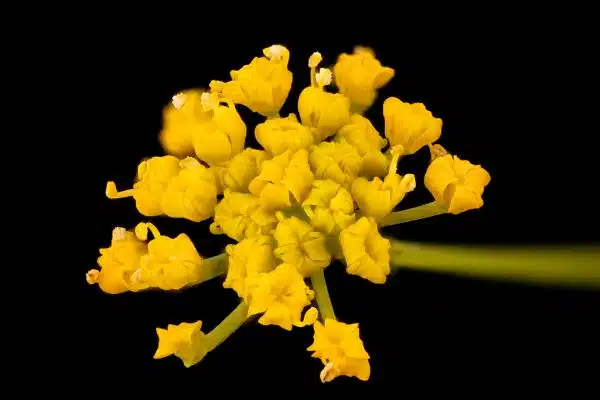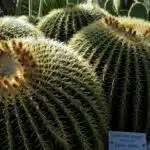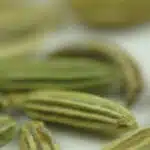Golden Alexander, also known as Zizia aurea, is a perennial wildflower that belongs to the carrot family. It is native to North America and can be found in meadows, prairies, and along riverbanks. Golden Alexander is an excellent choice for gardeners who want to add a touch of bright yellow color to their landscape while also contributing to the preservation of native plants.
Growing and caring for Golden Alexander requires some attention to detail but is relatively easy once you understand its needs. This article will provide essential information on how to grow and care for Golden Alexander, including planting instructions, soil requirements, watering needs, fertilization tips, pest management strategies, pruning techniques, and propagation methods. Whether you are a novice gardener or an experienced horticulturist looking for new challenges, this guide will help you achieve success with growing and caring for Golden Alexander.
Overview Of Golden Alexander
Golden Alexander, or Zizia aurea, is a perennial plant that belongs to the parsley family. This herbaceous plant is native to North America and can be found in various habitats such as wet meadows, prairies, and woodlands. The plant produces vibrant yellow flowers that bloom from May to July atop upright stems that grow up to three feet tall.
Golden Alexander has several uses, both medicinal and culinary. Native American tribes used it as a pain reliever and for treating respiratory issues. It also attracts pollinators such as bees and butterflies, making it an excellent addition to any garden. In terms of culinary use, the leaves of this plant can be added raw or cooked into salads, soups, and stews.
Interesting facts about Golden Alexander include its ability to self-seed readily and tolerate partial shade conditions. The plant’s roots have been used in the past to make tea for treating indigestion and other stomach ailments. Additionally, golden alexander is known for its drought tolerance once established, making it an excellent low-maintenance addition to gardens with dry soil conditions.
Understanding Golden Alexander’s growing conditions is crucial to ensuring optimal growth and health of the plant. With proper care and attention, this versatile herbaceous perennial can thrive in a variety of settings while providing beauty and function through its attractive foliage and blooms.
Understanding Golden Alexander’s Growing Conditions
Golden Alexander, also known as Zizia aurea, is a native wildflower that can be found in many regions of North America. This plant thrives in sunny locations and well-drained soils, making it an ideal choice for gardeners who are looking to add color and texture to their landscapes. According to recent studies, the golden alexander can grow up to 3 feet tall and 2 feet wide when provided with the right growing conditions.
If you plan on growing golden alexander, it’s important to understand its growing conditions. Here are some key factors to consider:
- Soil: Golden alexander prefers well-drained soil that is rich in organic matter.
- Sun: This plant requires full sun exposure for optimal growth.
- Water: Golden alexander needs moderate watering during the growing season.
- Container gardening: If you prefer container gardening, make sure the pot has adequate drainage holes.
Companion planting is an excellent way to improve the health and growth of golden alexander. You can plant this flower alongside other native wildflowers such as purple coneflower or black-eyed Susan. These plants will attract beneficial insects and pollinators that will help your garden thrive.
Choosing the right location for planting golden alexander is crucial for its success. In the next section, we’ll discuss how to select the perfect spot for your new plants without compromising their growth and development.
Choosing The Right Location For Planting
Golden Alexander plants thrive in areas that receive full sun exposure. When selecting the right location for planting, make sure to choose an area that receives at least six hours of direct sunlight each day. This will ensure that the plant grows healthy and strong, producing vibrant yellow flowers during its blooming seasons.
It is also important to consider the soil type and microclimate of the planting location. Golden Alexander plants prefer well-draining soil that is rich in organic matter. If your soil has a high clay content, you may need to amend it with sand or perlite to improve drainage. Additionally, if you live in an area with harsh winds, you may want to consider planting your golden alexander near a windbreak, such as a fence or hedge.
Proper drainage is crucial for the health of your golden alexander plant. Before planting, make sure to prepare the soil by incorporating organic matter and creating a slight slope away from the plant’s crown. This will help prevent standing water around the roots, which can lead to root rot and other diseases. By taking these steps to ensure proper sun exposure and soil preparation, you can enjoy a thriving golden alexander plant in your garden for years to come.
Soil Preparation For Golden Alexander
As the old saying goes, “You reap what you sow.” This sentiment holds true when it comes to planting and caring for Golden Alexander. The first step in ensuring a healthy and thriving plant is soil preparation. The quality of the soil has an enormous impact on the growth and development of this species.
One of the most important things to consider during soil preparation is composting. Composting is a natural process that involves breaking down organic matter into nutrient-rich soil. Adding compost to your garden bed before planting will provide essential nutrients that help Golden Alexander grow strong and healthy. These nutrients also promote healthy root development, which is crucial for plants to thrive.
Another critical factor in soil preparation is pH levels. Golden Alexander prefers neutral to slightly acidic soils with a pH range between 6.0-7.5. Soil pH can be tested using a simple kit available at any gardening store or online retailer. If your soil’s pH levels are too high or too low, it can significantly impact plant growth and health. Adjusting the pH levels by adding amendments such as lime or sulfur will help ensure optimal growing conditions for your Golden Alexanders.
Now that you have prepared the soil correctly, it’s time to move onto planting Golden Alexander seeds or transplants. Whether you choose seeds or transplants, proper care throughout the growing season is essential for these plants’ success. In the next section, we will discuss how to plant and care for both seedlings and transplants alike, so you can enjoy beautiful blooms all season long!
Planting Golden Alexander Seeds Or Transplants
When planting golden Alexander, it is important to choose a suitable location for the plant. Golden Alexander thrives in full sun but can tolerate some shade, so choose an area that receives at least six hours of direct sunlight each day. The soil should be well-drained and fertile, with a pH level between 5.6 and 7.5.
Golden Alexander seeds can be sown directly into the ground in early spring, or you can start them indoors six to eight weeks before the last frost date. If starting seeds indoors, use seed-starting mix and keep the soil moist but not waterlogged. Transplants can also be planted in late spring or early summer after any chance of frost has passed.
Container gardening is another option for growing golden Alexander if you have limited space or poor soil quality. Choose a container that is at least 12 inches deep and wide, filled with high-quality potting soil mixed with compost or perlite for drainage. Companion plants such as butterfly weed, black-eyed Susan, and purple coneflower will attract pollinators to your garden and provide visual interest alongside golden Alexander.
Transition: Now that you have successfully planted your golden Alexander seeds or transplants, it’s time to move on to watering this beautiful plant.
Watering Golden Alexander
After planting your golden alexander seeds or transplants, it is important to ensure that they receive adequate moisture for healthy growth. One of the most important factors in this regard is watering frequency. Golden alexander plants require regular watering, especially during their initial stages of growth. However, overwatering can also be detrimental to these plants and lead to root rot. Therefore, it is essential to maintain a balance between adequate soil moisture and avoiding waterlogging.
To determine whether your golden alexander plants require watering, check the moisture level of the soil. The ideal soil moisture for these plants should be moist but not soggy. You can assess this by sticking your finger into the soil up to an inch deep. If the soil feels dry at this depth, it’s time to water your plants. On the other hand, if the soil feels wet or saturated, hold off on watering until it dries out a bit.
Maintaining proper soil moisture levels is crucial for ensuring healthy growth and development of golden alexander plants. Besides regular watering, you can also use organic mulch around your plants to help retain moisture in the soil and prevent weed growth. In addition, avoid watering from overhead as this can lead to leaf diseases and other issues. Instead, water at ground level using a slow-drip irrigation system or a watering can with a spout to ensure even distribution of water around the roots.
Now that you know how to properly water your golden alexander plants let’s move onto fertilizing them for optimal growth and health.
Fertilizing Golden Alexander
As much as we would like to think that plants can survive on love and fresh air alone, they need nutrients to grow healthy and strong. Golden Alexander is no exception. Fertilizing your plant is an essential part of its care routine. However, with so many options available, it can be challenging to choose the right type of fertilizer for your plant.
Organic fertilizers are an excellent choice for Golden Alexander because they provide slow-release nutrients that promote healthy growth without harming the environment. Some popular organic fertilizers include compost, manure, and fish emulsion. These fertilizers are readily available at most garden centers and are easy to apply. They also help improve soil structure and increase water-holding capacity.
On the other hand, synthetic fertilizers offer quick results but come with some downsides such as leaching into groundwater or harming soil microorganisms. They also increase the risk of over-fertilization which may harm your plant in the long run. It’s important to follow the manufacturer’s instructions and avoid using more than necessary. If you decide to use a synthetic fertilizer, make sure it’s formulated specifically for Golden Alexander or other native plants in your area.
When using organic fertilizers:
Remember to use only fully composted materials.
Mix the fertilizer with soil before planting.
Apply in early spring or late fall.
When using synthetic fertilizers:
Follow the manufacturer’s instructions carefully.
Do not over-apply.
Water thoroughly after application.
Fertilizing is an essential part of Golden Alexander care that should not be overlooked. Whether you choose organic or synthetic options, make sure you read labels carefully and apply appropriately. In addition to proper feeding, there are other factors that can affect your plant’s health such as pests and diseases which we will discuss in the next section.
Common Pests And Diseases Of Golden Alexander
After fertilizing your Golden Alexander, it is important to know how to prevent and treat common pests and diseases that may affect the plant. Prevention measures are key in maintaining a healthy plant. One way to prevent pest infestations is to keep the area around the plant clean and free of debris that can attract pests. Additionally, avoid overwatering your Golden Alexander as this can lead to root rot and other fungal diseases.
If your Golden Alexander does become infested with pests or infected with disease, there are several treatment options available. One option is to use an insecticidal soap or horticultural oil spray to control pests like aphids or spider mites. For fungal diseases like powdery mildew, a copper-based fungicide can be effective. It is important to follow the instructions on these products carefully and apply them at the appropriate times for optimal results.
Natural pest control methods can also be effective in preventing and treating issues with Golden Alexander. Introducing beneficial insects like ladybugs or lacewings into your garden can help control pest populations. Additionally, companion planting with plants that repel pests such as marigolds or basil can also be helpful in preventing pest infestations. Overall, by taking preventative measures and utilizing treatment options when necessary, you can maintain a healthy and thriving Golden Alexander plant.
To continue caring for your Golden Alexander plant, exploring natural pest control methods can provide further insight into maintaining its health and longevity without relying on harsh chemicals or damaging pesticides. These methods work in harmony with nature’s ecosystem without causing harm to beneficial insects or plants nearby. Using natural remedies such as diatomaceous earth, neem oil, or garlic spray can effectively combat common pests like slugs, snails, and caterpillars while promoting a healthy environment for growth of the Golden Alexander plant itself.
Natural Pest Control Methods
Once you’ve successfully grown your golden alexander, the next step is to keep it healthy and pest-free. Just like how a good companion can ward off negative influences, companion planting can help protect your plants from pests. Natural pest control methods have been gaining popularity in recent years, and for good reason. Not only are they better for the environment, but they are also safer for humans and animals.
Here are three natural pest control methods that you can use to keep your golden alexander healthy:
- Introduce beneficial insects – Ladybugs and lacewings are great examples of predators that feed on aphids, which can be a common pest for golden alexander.
- Use companion planting – Planting herbs like basil or rosemary alongside your golden alexander can help repel unwanted pests while also adding some flavor to your garden.
- Make homemade insecticides – You can create a solution using ingredients like garlic, cayenne pepper, and dish soap that will help deter pests without damaging your plant.
By incorporating these natural pest control methods into your gardening routine, you’ll not only be keeping unwanted visitors away from your golden alexander but also contributing to a healthier ecosystem.
Now that you know how to naturally protect your golden alexander from pests, it’s time to talk about pruning.
Pruning Golden Alexander
Pruning Golden Alexander is an important part of its care and maintenance. An appropriate pruning technique should be used depending on the desired shape and size of the shrub. In general, trimming should be done in late winter or early spring before new growth appears. Pruning tools should be sharp and clean to prevent damage to the branches and leaves of the shrub. Hand pruners and loppers are recommended for smaller branches, and larger branches should be pruned with a pruning saw. Pruning Golden Alexander should be done regularly to promote healthy growth and maintain a desired shape.
Pruning Techniques
Pruning golden alexander is an essential part of its overall care, ensuring that the plant remains healthy and vibrant. Knowing when and how to prune this plant can significantly impact its growth and appearance. Pruning frequency depends on the age of the plant, as well as its growth rate.
When pruning golden alexander, it is important to use the right tools. Sharp and clean pruning shears should always be used to prevent damaging the plant or spreading diseases. It is also important to sanitize your tools after each use to minimize infection risks.
Pruning techniques for golden alexander include deadheading, which involves removing spent flowers to encourage new blooms; cutting back stems that have become too tall or leggy; and removing any damaged or diseased parts of the plant. By following these simple steps, you can help ensure that your golden alexander remains healthy and beautiful for years to come.
Trimming Frequency
Pruning is an essential part of caring for Golden Alexander plants, and trimming frequency plays a crucial role in the health and growth of this plant. Regular pruning can provide numerous benefits, including promoting new growth, controlling the size and shape of the plant, and preventing diseases from spreading. The right trimming techniques can help ensure that your Golden Alexander remains healthy and vibrant while enhancing its beauty.
The benefits of trimming Golden Alexander are numerous. Regular pruning can help promote new growth by stimulating dormant buds on the stem to produce new branches. Trimming also keeps the plant at a manageable size, preventing it from becoming too large or out of control. Additionally, regular pruning can prevent diseases from spreading by removing any damaged or diseased parts of the plant before they have a chance to infect other areas.
When it comes to trimming techniques for Golden Alexander plants, there are several approaches you can take. Deadheading is one technique that involves removing spent flowers to encourage new blooms. Cutting back stems that have become too tall or leggy is another technique that can help promote fuller growth and prevent the plant from becoming lanky. Lastly, removing any damaged or diseased parts of the plant should be done promptly to prevent them from spreading to other areas of the plant. By following these techniques regularly, you can help ensure that your Golden Alexander remains healthy and beautiful for years to come.
Pruning Tools
Pruning Golden Alexander plants is an important task to ensure healthy growth and promote new blooms. While the benefits of pruning are clear, using the right tools for the job is equally crucial. Different types of pruning tools can make the process easier and more effective. Understanding which tool to use for each task is essential for maintaining the health and beauty of your Golden Alexander.
There are several different types of pruning tools that you can use when caring for your Golden Alexander plant. Hand pruners are ideal for smaller branches and stems, while loppers can handle larger branches up to two inches in diameter. Hedge shears are great for shaping hedges or trimming large areas of foliage quickly. Lastly, pruning saws work well on thicker branches that cannot be cut with hand pruners or loppers.
Using the appropriate tool for each project ensures that you can prune your Golden Alexander without causing any damage to the plant. Each type of pruning tool has its unique advantages, so it’s essential to have a variety on hand to tackle different projects effectively. By having a well-stocked toolkit and understanding which tool to use for each task, you can keep your Golden Alexander thriving and looking beautiful throughout the year.
Deadheading Golden Alexander
Deadheading Golden Alexander plants is a beneficial practice for maintaining their health and beauty. Deadheading is the process of removing spent blooms before they have a chance to form seeds. The benefits of deadheading include encouraging the plant to produce more flowers, promoting healthy growth, and preventing the spread of disease.
To deadhead Golden Alexander, wait until the flowers have faded and started to wilt. Use clean pruning shears or scissors to snip off the entire stem just above the next set of leaves or buds. Be sure to cut cleanly and avoid damaging any surrounding foliage. Deadheading can be done throughout the growing season as needed.
As a general guideline, it’s best to deadhead Golden Alexander once every two weeks during peak blooming season. This will help keep the plant looking tidy and encourage new blooms to form. However, if you notice that your plants are producing fewer flowers than usual or if they start to look leggy or unhealthy, consider increasing the frequency of deadheading. With regular care and attention, your Golden Alexander plants will thrive and continue to provide beautiful blooms year after year.
In order to propagate Golden Alexander from seeds or cuttings, there are several steps you can follow. First, collect seeds from mature plants in late summer or early fall when they are dry and brown. Alternatively, take cuttings from new growth in spring or early summer by carefully removing a small section of stem with a few leaves attached. Once you have your seeds or cuttings, you can then plant them in well-draining soil in a sunny location and water regularly until they become established. With patience and proper care, you can enjoy an abundance of Golden Alexander plants in your garden for years to come.
Propagating Golden Alexander From Seeds Or Cuttings
Deadheading Golden Alexanders is an essential step in caring for these plants. By removing the spent flowers, you can encourage new growth and prolong the blooming period. When deadheading, it’s best to cut back to where the stem meets a lateral branch or leaf. This will help maintain the plant’s shape and promote bushier growth.
Propagating Golden Alexanders from Seeds or Cuttings is another way to expand your collection of these beautiful plants. The Benefits of Golden Alexander are many, including their ability to attract pollinators such as bees and butterflies. They also have bright yellow blooms that add color and vibrancy to any garden. The Best Time for Propagation is in the spring when new growth begins.
To propagate from seeds, collect them after they have ripened on the plant and sow them directly into the soil. To propagate from cuttings, take stem cuttings in late spring or early summer and place them in moist soil or water until roots form. Once rooted, transplant into well-draining soil and keep consistently moist until established.
Division of Golden Alexanders is another method of propagation that can be done every few years to rejuvenate older plants. By dividing the root ball into smaller sections, you can create new plants while also promoting healthier growth in existing ones. It’s generally best to do this in early spring before new growth begins. With proper care and attention, your Golden Alexanders will continue to thrive year after year!
Division Of Golden Alexander
Dividing Golden Alexander is a beneficial technique that contributes to the longevity and health of this plant. The Benefits of division include rejuvenating the plant, increasing its vigor, and controlling its size. By dividing the Golden Alexander every three to four years, you can ensure that it continues to thrive and remain healthy.
Ideal timing for division is in the spring or early fall when new growth is beginning to emerge. This ensures that the plant has time to establish itself before the harsh winter months arrive. Additionally, it’s best to divide your Golden Alexander on a cloudy day or in the evening when temperatures are cooler as this helps prevent moisture loss from the roots.
To divide your Golden Alexander, follow these simple steps:
- Dig up the entire plant using a garden fork or spade.
- Use a sharp knife or shears to cut through the root ball into smaller sections.
- Replant each section in well-draining soil at a depth equal to its previous planting depth.
- Water thoroughly and continue to water regularly until new growth appears.
By following these steps and dividing your Golden Alexander at the ideal timing, you can ensure that this beautiful plant remains healthy for years to come. Next, let’s discuss how to care for your Golden Alexander during the winter months.
Winter Care For Golden Alexander
After dividing your Golden Alexander, it’s essential to provide proper winter care for the new plants. Protecting roots is crucial during this season, so ensure that the soil around the plant is moist before the ground freezes. You can also mulch the base of the plant with leaves or straw to help retain moisture and provide insulation from harsh winter temperatures.
Winter watering is necessary in areas with low precipitation levels, particularly when there is a lack of snow cover. Use a watering can or hose to moisten the soil around the roots but avoid overwatering as this may cause root rot. Additionally, frost protection is essential for Golden Alexander during freezing temperatures. You can cover your plants with a protective layer like burlap or old sheets to prevent frost damage.
Overall, caring for Golden Alexander in winter requires attention and effort, but it’s worth it to ensure that your plants thrive come springtime. By providing adequate protection for roots and foliage, you can safeguard against winter damage and increase your chances of success when growing these beautiful plants.
Moving forward, if you want to attract pollinators like bees and butterflies to your garden, there are some tips you can follow when growing Golden Alexander. With its bright yellow flowers and nectar-rich blooms, this plant is an excellent choice for attracting pollinators.
Tips For Attracting Pollinators With Golden Alexander
One common misconception about cultivating golden alexander is that it’s only suitable for gardeners who want to beautify their gardens with yellow flowers. However, this plant is also a great option for those who want to attract pollinators. Golden alexander is known for its ability to attract bees and butterflies, making it an excellent choice for gardeners who wish to contribute to the preservation of our ecosystem.
To maximize the number of bees and butterflies visiting your garden, you should plant golden alexander in large groups. This will not only create a stunning visual display but also ensure that the pollinators can easily spot the plants from afar. Additionally, planting companions such as Echinacea purpurea and Asclepias tuberosa can increase the attractiveness of your garden to pollinators.
Garden design also plays a crucial role in attracting pollinators with golden alexander. Consider incorporating different heights of plants in your garden bed or border to create layers and provide diverse habitats for pollinators. You may also want to consider planting other native wildflowers and shrubs in your garden. Not only will this diversify your garden’s flora, but it will also help support local wildlife populations.
To sum up, growing golden alexander is more than just a way of adding a pop of color to your landscape; it’s an opportunity to give back to nature by providing food and habitat for important pollinators like bees and butterflies. By planting golden alexander in large groups, choosing compatible companions, and designing your garden with diverse habitats in mind, you’ll be able to create an inviting environment for these essential creatures while enjoying the beauty of this stunning plant.
Conclusion
Golden Alexander is a beautiful and versatile plant that can be grown in many different conditions. By understanding the growing requirements of this plant, you can create a stunning addition to your garden that will attract pollinators and provide year-round interest.
When it comes to growing Golden Alexander, it’s important to choose the right location and prepare the soil properly. This plant prefers full sun or partial shade and well-draining soil. It is also drought-tolerant once established, making it a great choice for dry areas.
To ensure success with Golden Alexander, make sure to plant seeds or transplants at the right time and space them appropriately. Propagation from seeds or cuttings is also possible, as is division of established plants.
In terms of winter care, Golden Alexander benefits from a layer of mulch to protect the roots during cold weather. And if you want to attract even more pollinators to your garden, consider planting other native species alongside your Golden Alexander to create a vibrant ecosystem.
Overall, Golden Alexander is an excellent choice for gardeners looking for a low-maintenance plant with plenty of visual appeal. As one might compare this plant to a ray of sunshine in the garden; its bright yellow blooms are sure to bring joy and vitality wherever they are planted. With proper care and attention, your Golden Alexander will provide years of beauty and enjoyment for both you and any visitors who happen upon its radiant presence.
Image Credits
- “Zizia aurea, 3, Golden Alexanders, Howard County, Md, _2018-05-18-00.18.50 ZS” by Sam Droege (featured)





























